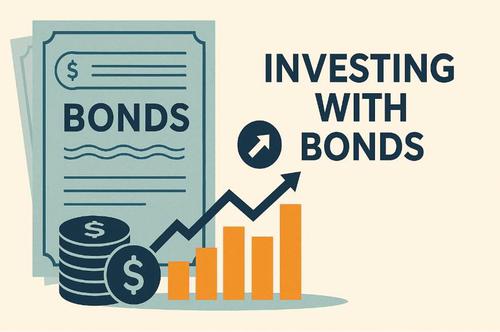MarketLens
Is the iShares 20+ Year Treasury Bond ETF (TLT) a Buy Amid Market Volatility?
Key Takeaways
- The iShares 20+ Year Treasury Bond ETF (TLT) has demonstrated solid long-term performance but has faced recent volatility.
- Current market dynamics, including potential Federal Reserve rate cuts, suggest a bullish outlook for TLT.
- Expert opinions are mixed, with some recommending TLT as a hedge against economic uncertainty and others advising caution due to interest rate risks.
- TLT’s historical performance shows a compound annual return of 5.31% over 30 years, but recent returns have been negative.
- Investors should weigh TLT’s risk profile, including its significant maximum drawdown and moderate risk-adjusted returns, before making a decision.
Introduction
Historical Performance and Risk Metrics
Long-Term Performance
The iShares 20+ Year Treasury Bond ETF has a long history, with data spanning from January 1871 to July 2024. Over the past 30 years, TLT has delivered a compound annual return of 5.31%, turning an initial investment of $1 into $4.72. However, when adjusted for inflation, the net total return drops to 123.75%, or 2.72% annualized.
Recent Performance
Recent performance metrics paint a mixed picture:
- 1-Day Return: 0.36%
- Month-to-Date (August 2024): 2.24%
- Year-to-Date (2024): -2.20%
- 1-Year Return: 0.04%
- 5-Year Return: -1.52%
Risk Metrics
TLT’s risk profile includes:
- Standard Deviation (30 years): 12.36%
- Maximum Drawdown: -47.75%, with a recovery period of 48 months.
- Sharpe Ratio (30 years): 0.24, indicating moderate risk-adjusted returns.
- Ulcer Index: 13.11, suggesting moderate downside risk.
Dividend Information
In 2023, TLT offered a dividend yield of 3.41%, providing a steady income stream for investors.
Current Market Dynamics
Price and Predictions
As of August 2024, TLT is trading at approximately $96.26. Historical data suggests an average rise of 1.5% over the next 52 weeks, with a price prediction around $97.55. However, the ETF is rated as a “Sell” with a score of 46, indicating higher risk than normal.
Federal Reserve and Economic Indicators
Anticipated interest rate cuts from the Federal Reserve are a significant factor influencing TLT’s outlook. Analysts predict that rate cuts, possibly starting as early as September 2024, will lead to increased bond prices. Economic indicators such as rising unemployment and personal debt pressures also contribute to a favorable outlook for TLT.
Technical Analysis
Key resistance levels for TLT are around the $100 mark. A breakout above this level could lead to potential all-time highs within the year. Analysts have set price targets ranging from $92 to $114, depending on upcoming economic events and Federal Reserve decisions.
Expert Opinions
Mixed Consensus
Expert opinions on TLT are mixed. Out of five analysts, two recommend buying, while three advise selling. The overall consensus reflects caution due to the current interest rate environment and TLT’s historical performance.
Bullish Views
Some experts see TLT as a good speculative play if interest rates fall, especially during a recession. For instance, Keith Richards suggests TLT could be a relatively safe trade during a period of easing interest rates.
Bearish Views
Others, like Hank Cunningham, are bearish on long bonds, advising selling if the Fed delays rate cuts until 2025 due to persistent inflation risks. Daniel Straus notes a significant decline in long bonds since rates began increasing but acknowledges the current yield of 3-4% as decent for long-term holders.
Technical Patterns
Some analysts observe a symmetrical triangle in TLT’s chart, indicating a potential breakout to the upside after a prolonged downtrend. This technical pattern suggests a bullish outlook moving forward.
Strategic Considerations for Investors
Risk Profile
Investors should consider TLT’s risk profile, including its significant maximum drawdown and moderate risk-adjusted returns. The ETF’s historical performance shows resilience over the long term, but recent volatility and negative returns over the past five years warrant caution.
Portfolio Allocation
TLT has been included in numerous lazy portfolios, with weights varying from 10% to 40% depending on the strategy. For example, Ray Dalio’s All Weather Portfolio allocates 40% to TLT, reflecting its role as a hedge against economic uncertainty.
Economic Uncertainty
Given the current economic uncertainty and geopolitical tensions, TLT may serve as a safe asset, providing stability in a diversified portfolio. However, investors should be mindful of the potential for further interest rate hikes and their impact on long-term bond prices.
Yield Considerations
With a yield around 3.80%, TLT offers a strong income stream for long-term holders. This yield can be attractive for income-focused investors, especially in a low-interest-rate environment.
Conclusion
The iShares 20+ Year Treasury Bond ETF (TLT) presents a complex investment opportunity. While its long-term performance and potential for gains amid anticipated Federal Reserve rate cuts are appealing, recent volatility and mixed expert opinions suggest caution. Investors should weigh TLT’s risk profile, including its significant maximum drawdown and moderate risk-adjusted returns, before making a decision. For those seeking a hedge against economic uncertainty, TLT may be a valuable addition to a diversified portfolio. However, careful consideration of current market dynamics and individual investment goals is essential.
Related Articles
Category
You may also like
No related articles available
Breaking News
View All →No topics available at the moment






